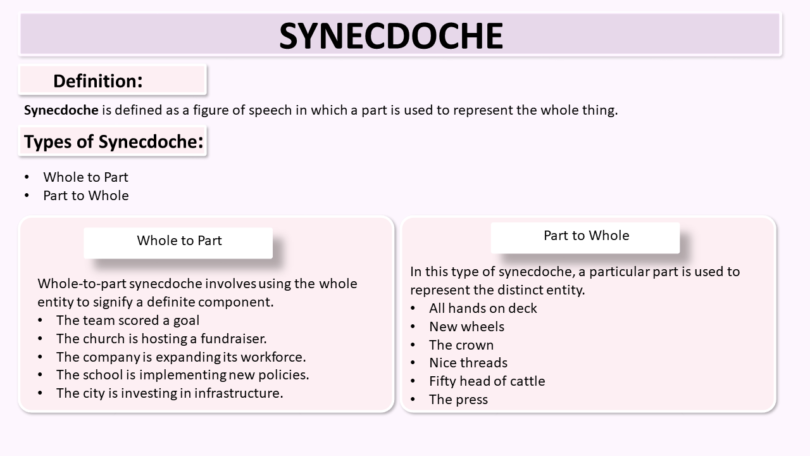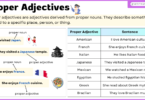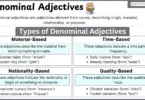What is synecdoche?
There exists a fascinating figure of speech in language, powerful enough to take prose to new heights. You know what it is? It’s a synecdoche. Let’s explore the Synecdoche Definition. It is derived from the Greek words “syn” and “ekdoche.” The word “syn” means together and the word “ekdoche” means “to interpret”.
Definition: It is defined as a figure of speech in which a part is used to represent the whole thing. A subset to represent a set. Its function involves a specific component of a concept to replace the whole entity or use of the entire entity to denote a particular component. It adds depth to language and engages the audience.
It works on the principle of replacing a part for the whole or whole representing a part and involves a spectrum of rhetorical devices where a component represents the whole entity or whole entity denotes a part. This delicate link between the subset and set, enables the language with resonance and depth. It invites readers to engage with implicit depths.
Types of Synecdoche:
- Part to Whole
- Whole to Part
Part to Whole:
In this type, a particular part is used to represent the distinct entity.
For example: The word “wheels” to represent “car.” Another example includes “Boots on ground” to represents a group of soldiers.
Whole to Part:
Whole-to-part involves using the whole entity to signify a definite component.
For example: Using “the White House announced” to denote the actions of the U.S. government.
The Artistry of Synecdoche in Literature:
It’s a strong base to make content interesting, giving a more clear meaning. It’s a way to use words more creatively, as in stories, or poems, making them more interesting. It engage audience and helps them develop a better understanding.
Examples:
Here are some examples to help you get a better understanding.
- The White House announced
- All hands on deck
- The press
- The crown
- The suits
- The stage
- The Oval Office
- Boots on the ground
- The bottle
- The bench
- The track
- The screen
- The mic
- The stage
- The pitch
- The field
- The scalpel
- The waves
- The track
- The bench
- The knife
What these refers to? Let’s explore below.
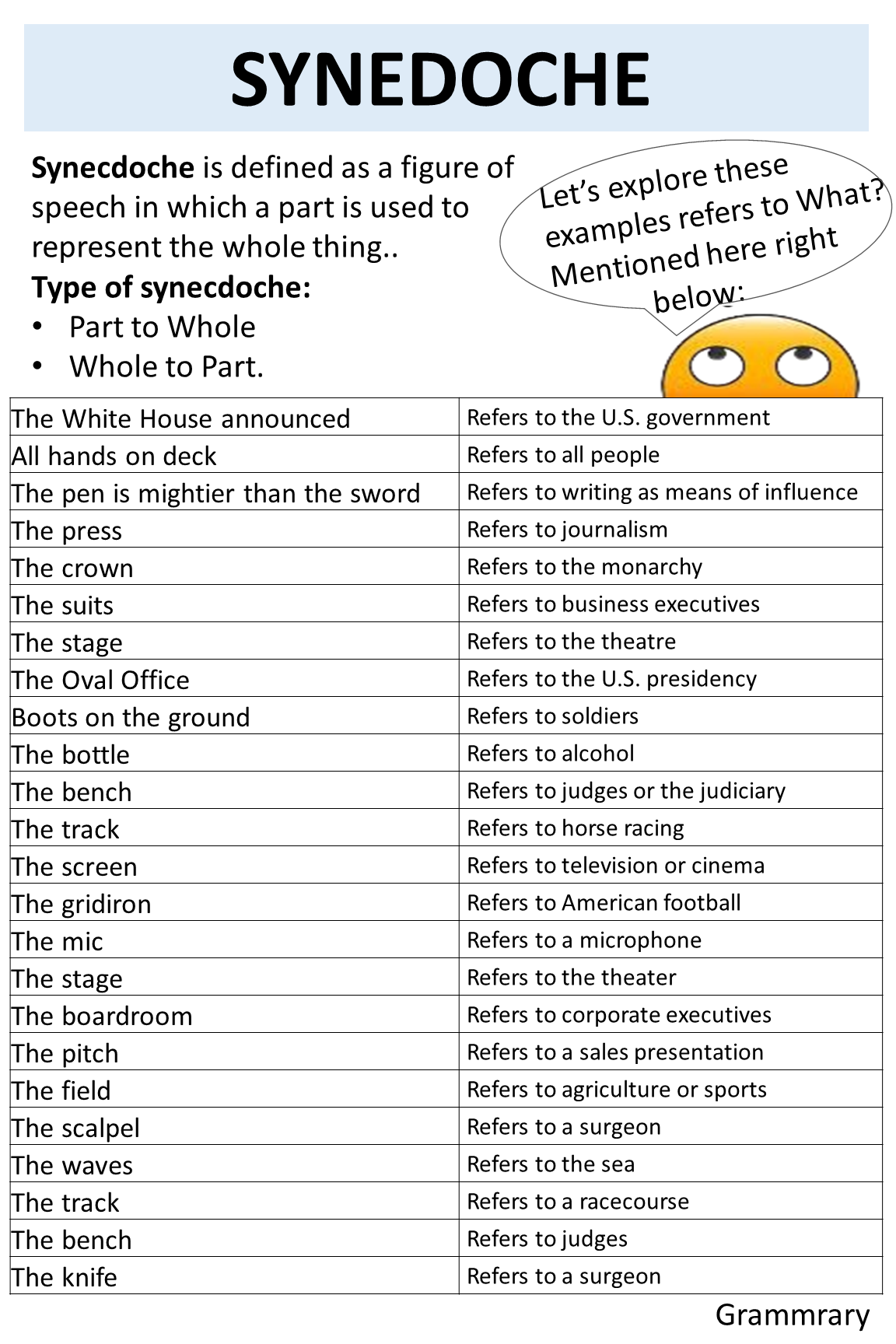
Synecdoche Examples and What it refers to, to help you better understand
Rules to consider while writing:
- Clarity
- Relevance
- Context
- Accuracy
- Avoid Overuse
- Consistency
- Effectiveness
- Creativity
- Consider the Audience
- Revision
Part to Whole and Whole to Part:
| Part-to-Whole | Whole-to-Part |
| All hands on deck | The film industry is evolving. |
| New wheels | The press is covering the event |
| The crown | The team scored a goal |
| Nice threads | The church is hosting a fundraiser. |
| The pen is mightier than the sword | The company is expanding its workforce. |
| Fifty head of cattle | The school is implementing new policies |
| Give us this day our daily bread | The city is investing in infrastructure. |
| The press | The crown announced new regulations |
| She’s studying Shakespeare | The city is investing in infrastructure |
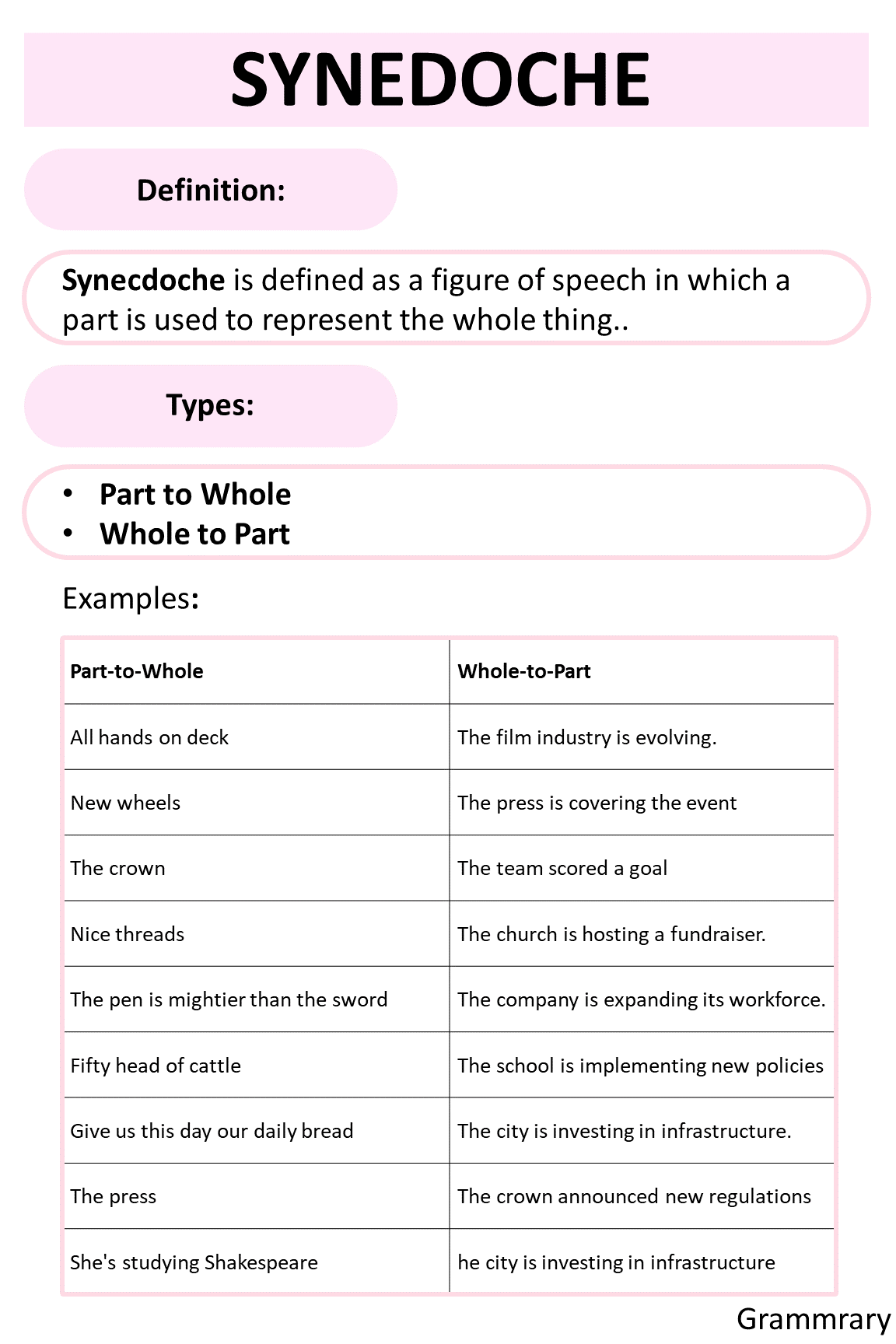
Synecdoche Definition, Types and Examples

